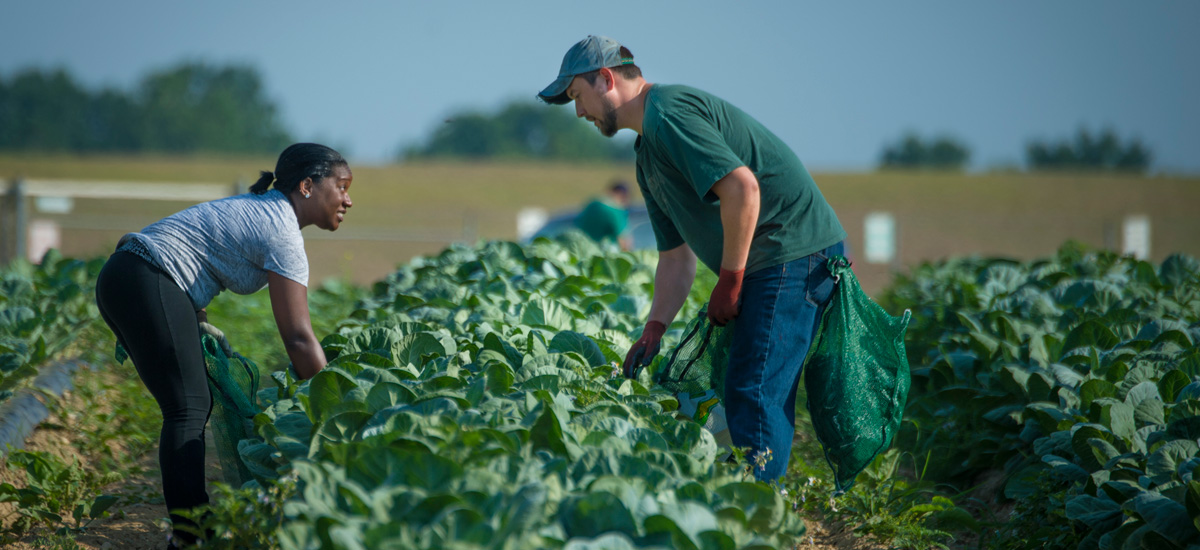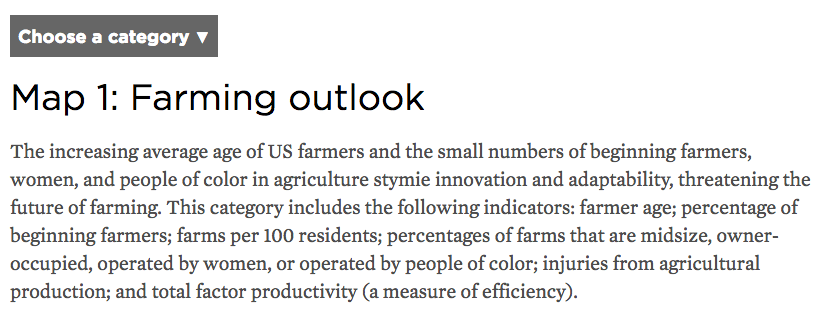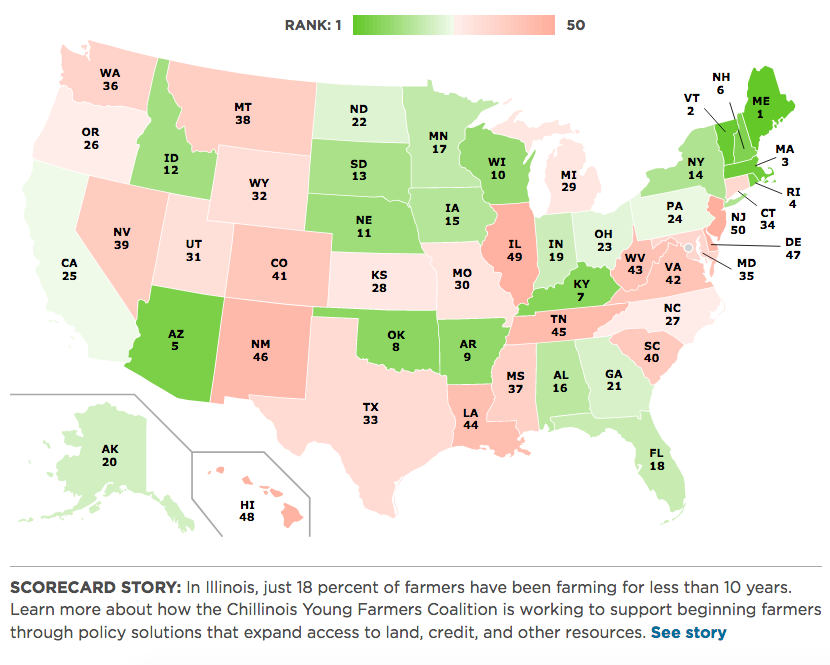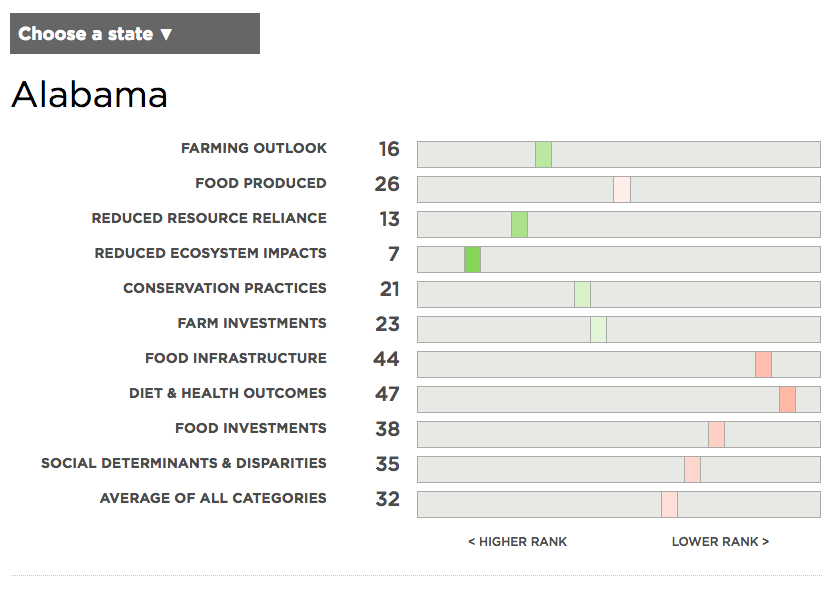Union of Concerned Scientists: 50-State Food System Scorecard
by UCSUSA.org
Ranking the states on farm and food health
About the scorecard
From farm to fork, our food system should be something we are proud of—supporting farmers, workers, and local economies; ensuring that everyone has access to enough nutritious food to stay healthy; and protecting our soil and water for the future.
How close are we to realizing this vision? What do we know about the overall health, sustainability, and equity of the food system across the United States?
UCS created the 50-State Food System Scorecard to help answer these questions. First, we gathered publicly available data on a wide range of indicators. We then grouped the indicators into 10 broad categories and calculated scores for each state in each category. Finally, we averaged state scores across all 10 categories.
The results show that both the failures and the promise of the US food system are distributed broadly—and sometimes in surprising ways—across the 50 states. Most states scored well in at least a few categories, but few scored well in all of them. For instance, Vermont, which had the highest overall score, was outranked by 23 states when it comes to reducing agriculture’s ecosystem impacts. And while Arkansas’s overall score was low, it ranked in the top 10 for farming outlook and farm investments.
The rankings, and the stories behind them, point to opportunities and offer models for improving every state’s food system. And they remind us that even as we focus our energy on shaping a better federal farm bill, there’s a lot we can do to transform our food system at the state and community level.
Mapping results by category
Choose a category from the list below to see a map showing each state’s ranking in that category. (For a full explanation of how rankings were calculated, see the methodology document.)
Charting results by state
Choose a state from the dropdown list to see how that state did across all 10 categories. (For the average of all categories, note that it’s the scores rather than the ranks for each category that are averaged here.)
Policy recommendations
Based on the findings of this analysis, UCS offers the following recommendations to foster innovation and improve food systems in every state:
- Congress should increase federal farm and food investments to enable communities in every state to build healthier, more sustainable food systems. Many federal programs should be protected, strengthened and expanded through the five-year federal farm bill. These include programs that support and train new farmers and ranchers, offer incentives for farmers to adopt more sustainable practices, fund innovative agricultural research, expand local markets for farmers, make nutritious foods more available and affordable, and ensure that our nation’s most vulnerable individuals and families can put food on their tables.
- The U.S. Department of Agriculture (USDA), in administering its programs, should ensure they promote synergies and help every state maximize overall benefits.
- States and localities should explore every option to use agriculture, education, health, tax, and zoning policies to address problems and make their residents healthier and their ecosystems and economies more sustainable. Jurisdictions that do not already have food policy councils in place should consider establishing such coordinating bodies.
- The USDA and land-grant universities in every state should expand food system data collection and transparency efforts to give researchers and other stakeholders greater insight into the impacts of existing initiatives and help policymakers design better programs in the future.



